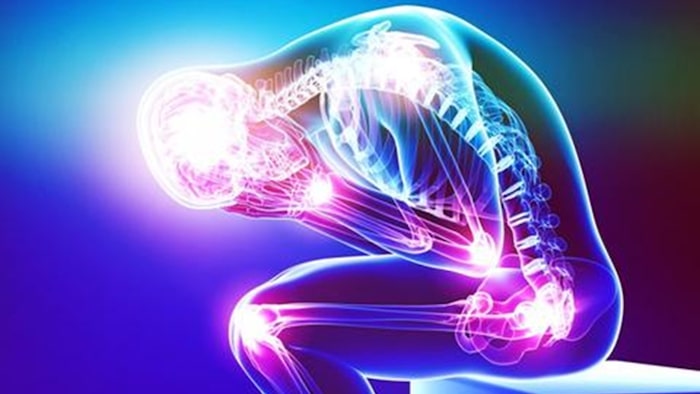
You can’t accomplish much when your joints hurt every time you move. Whether knee or hip pain literally stops you in your tracks, wrist pain interferes with your work, or shoulder pain limits arm movement, call the Pain Management Center. Their innovative regenerative and interventional treatments can effectively relieve pain and restore function.
Common Causes of Joint Pain
Your joints endure an exceptional amount of stress as they support movement while enduring repetitive and weight-bearing movements. As a result, joints are vulnerable to injuries and degenerative diseases that lead to chronic pain.
Some of the most common causes of joint pain include:
- Sprains and strains
- Overuse and traumatic injuries
- Osteoarthritis
- Tendonitis
- Bursitis
- Dislocation
- Osteomyelitis
- Rheumatoid arthritis
When the pain from an injury persists despite medical treatment or you struggle with chronic degenerative joint pain such as arthritis, don’t give up hope.
Many patients reach the end of their conventional medical options, still have pain, and figure they’ve run out of treatments. But here are a few examples of the types of treatments used to treat joint pain.
Interventional Therapies Deliver Immediate and Long-Lasting Pain Relief.
Interventional medicine employs treatments that go directly to the nerves causing your pain. Peripheral nerves pick up pain signals, which go through the spinal cord to your brain. You don’t feel the pain until your brain gets the signal.
When the doctors isolate the nerves responsible for pain signals from the affected joint, they can use numerous treatments to block the pain.
These are only a few examples of interventional techniques to stop joint pain:
Nerve Blocks
A nerve block is an injection that primarily contains an anesthetic, but may also include steroids. When the medication is injected at the spinal nerve root associated with your joint pain, the anesthetic blocks nerve signals for immediate pain relief, while steroids reduce inflammation, providing longer-lasting results.
Peripheral Nerve Block
Peripheral nerve blocks contain the same medications, but your doctor injects it at the specific peripheral nerve that’s causing your pain. For example, a genicular nerve block effectively treats pain in your knee.
Radiofrequency Ablation
Radiofrequency ablation produces a longer-lasting type of nerve block by using heat to produce a small burn on the nerve transmitting your pain signals. The signals are blocked, and your pain is relieved for eight to 12 months until the nerves regenerate.
Joint Injections
Joint injections contain steroids, which your doctor injects directly into the affected joint to significantly reduce inflammation, in turn, alleviating your pain. If your joint pain is due to cartilage degeneration, your doctor may inject hyaluronic acid to boost joint lubrication and facilitate smooth, pain-free movement.
Regenerative Treatments Target Joint Pain.
Regenerative treatments use cells from your own body that naturally heal tissues. Two types of regenerative therapies are platelet-rich plasma (PRP) and stem cell injections.
Throughout your lifetime, adult stem cells guard your health by continuously self-replicating to produce new cells. Then the new cells develop into every type of cell needed to replace old, injured, and diseased tissues.
The board-certified pain management physicians can remove your own adult stem cells and then inject them into a painful joint, where they go to work, regenerating new cartilage, ligaments, tendons, muscles, and bones. They also release growth factors and other healing biochemicals.
Platelets are naturally found in your bloodstream, where they travel to diseased and damaged tissues and release growth factors that activate healing. PRP is made in the office by simply taking a sample of your blood and separating the platelets. When platelets are injected into your damaged joint, they recruit stem cells to the area, stimulate the growth of blood vessels and other new tissues, and prevent degeneration of healthy tissues.
PRP and stem cells both reduce inflammation and alleviate your pain. They may be injected alone or together to enhance your results.
Here’s What You Can Do About Disabling Joint Pain.
The best thing you can do is to keep moving. Gentle, structured exercise and physical therapy are the keys to long-term joint improvement. But we understand that it’s often impossible to keep moving when you’re in pain — that’s why our treatments are so important.
Interventional and regenerative therapies provide the pain relief you need to fully engage in physical therapy and rehabilitation.
Precision Pain Care and Rehabilitation has four convenient locations in Richmond Hill – Queens and New Hyde Park, Lindenhurst, and Valley Stream – Long Island. Call the Queens office at (718) 215-1888, or (516) 419-4480 for the Long Island offices, to arrange an appointment with our Interventional Pain Management Specialist, Dr. Jeffrey Chacko.













